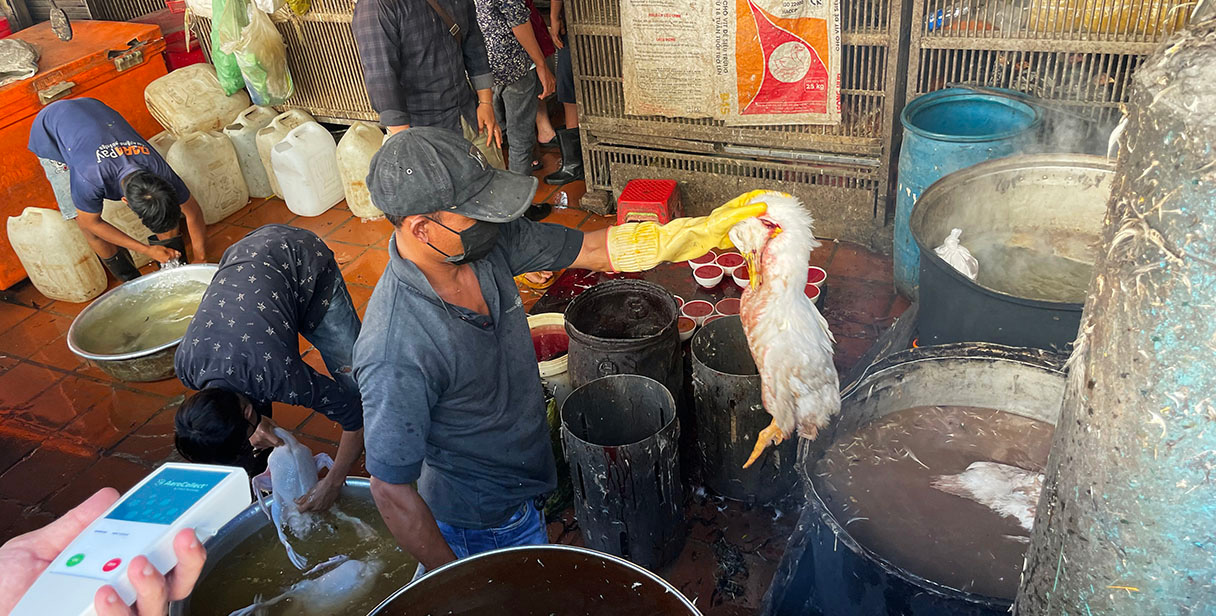On a Friday morning in September last year, Erik Karlsson visited the sprawling Orussey market here, where vendors hawked pots and pans, phone cords and radios, hats and dresses—and myriad types of Southeast Asian food. Dozens of orange-colored, whole roasted pigs hung on hooks, crabs the size of two fists filled buckets, and stacked fruit and dried fish formed mountains on tables.
Karlsson had come for the live poultry, but not because he was planning a dinner. As an epidemiologist at Cambodia’s Pasteur Institute, he was hunting for potentially dangerous pathogens, both known and unknown. He had nothing with him but a cellphone in one hand and, in the other, a device that resembles a portable credit card reader, which he held close to men who were slaughtering, boiling, and defeathering chickens. The AeroCollect, as it’s called, has a chip that uses an electric field to suck in and trap air in microscopic chambers. Later, back at his lab, Karlsson flushed each chamber’s content with a water rinse and ran a polymerase chain reaction (PCR) to amplify any viral RNA in the air.
Karlsson is one of many researchers looking for simpler, faster, cheaper, and safer ways to find viruses—including the ones that could cause the next pandemic. If the AeroCollect works well, he won’t need to don masks and gloves and get permission to draw chickens’ blood and swab their behinds. Karlsson also plans to test flying the device on a drone into bat caves—which are known viral hotbeds—so researchers don’t have to enter them.




